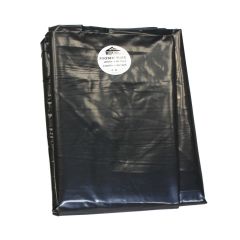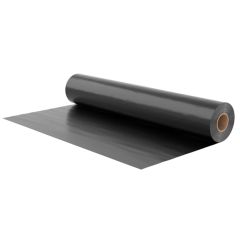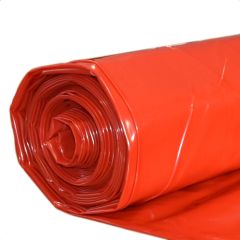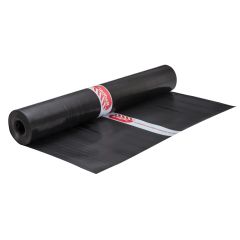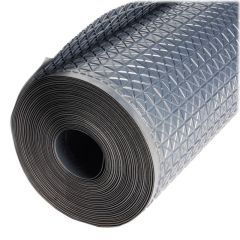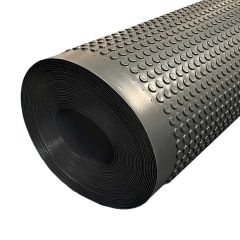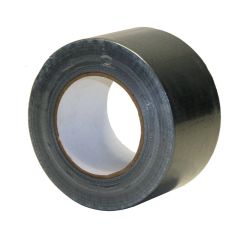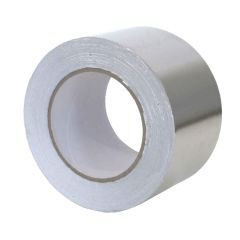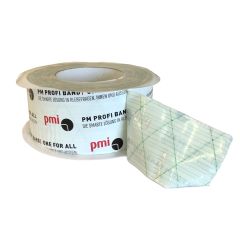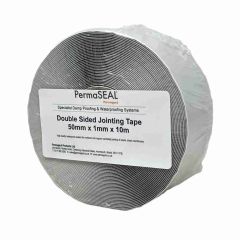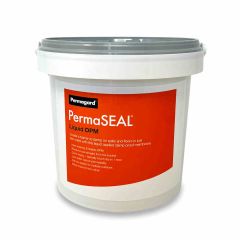Learn more about DPM for Concrete Floors
DPM flooring
At Permagard, we stock low-density polythene DPMs designed to prevent moisture from the ground entering a property via the floor. These DPMs are used during construction to create a barrier between the subbase and concrete slab or screed, stopping moisture and contaminants from entering it. They are designed for use in solid concrete floors that are not subject to hydrostatic pressure.
If you are looking to protect internal walls, view our damp proof membrane category.
DPM for under concrete slabs
A DPM is an essential component in the construction of a new floor. DPM membranes are laid under a new concrete slab to prevent moisture transmission. In most common construction scenarios, you will have a bed of hardcore with a sand blinding on the ground, then either:
- a DPM before a layer of concrete
- a DPM before a layer of insulation, then a second DPM before the concrete slab is laid
Note: If you suspect the groundwater to contain sulphates, then the DPM should always be placed below the concrete.
DPM Rolls and Sheets
Permagard stocks polythene DPMs in different gauges to meet various requirements. These sheet DPMs are installed before insulation, or before a concrete slab or screed is poured. 1200 gauge is the minimum requirement.
1200 Gauge DPMs
We stock 1200 gauge DPMs with the recommended thickness of 300μm. These DPMs are highly effective at preventing moisture from passing from the ground into the property. This provides long-term protection for any floor coverings such as carpets, laminates or vinyl tiles.
We provide two options to meet your requirements:
- DPM Rolls – 4m x 25m (1200 Gauge) – best suited for larger projects
- 1200 Gauge Handy Pack – 4m x 5m – convenient for smaller jobs
They can be used in the following scenarios:
- As an oversite membrane – located between a blinded hardcore bed and the base concrete slab
- As a sandwich membrane within a base concrete slab
- Between the base concrete slab and the screed
These black DPM membranes are unaffected by groundwater and interstitial condensation should it occur. They are also extremely durable and highly puncture-resistant. This means they provide decades of protection as well as withstanding site traffic during installation. Under normal conditions, the 1200 gauge DPM will remain an effective moisture barrier for the life of the concrete slab.
1600 Gauge Radon DPMs
To protect a property from moisture and ground gases, it’s important to opt for a suitable DPM for the type of gas present. At Permagard, we stock a 1600 gauge radon DPM:
This DPM is specifically designed to stop the transmission of radon gas as well as damp, protecting inhabitants and providing them with peace of mind.
Shop our full range of gas membranes or read our guide to installing gas membranes.
DPM Installation
DPM installation is relatively straightforward. Roll out the DPM sheet across the surface and cut to size. We recommend that you install the membrane with as few joints as possible, so pre-planning is a good idea. You should pay particular attention to overlapping and joining with subsequent DPM rolls, making sure these joints are watertight.
It’s vital to avoid any tears or damage during installation as this can create a vulnerability that leads to moisture ingress/damage. As mentioned before, the membranes can withstand some light traffic, but care must always be taken and a final inspection for damage undertaken before any pouring or subsequent coverings.
DPM Tapes
When DPMs overlap you should use DPM tape to seal the joints. We sell both single and double-sided DPM tape. Your DPM always needs to be continuous with the damp proof course (DPC) in the walls etc. When installing a gas-proof DPM, joints should be bonded together with PermaSEAL Double-sided Jointing Tape and sealed with single-sided Tape.
DPMs above the screed
In some cases, it is necessary to install a DPM above an existing screed. This may be where the original DPM was not installed or the original DPM was damaged at some point. In these instances, we suggest the use of Liquid DPMs, Epoxy DPMs or even dimpled sheet DPMs.
Epoxy DPMs
If you’re looking to install a DPM on top of an existing concrete floor, you can use an epoxy DPM. This is a highly efficient and reliable way to create a damp proof barrier on a concrete floor and protect against rising damp.
Explore our full range of Epoxy DPMs. For the ultimate in efficiency, shop our PRO One Coat DPM.
Liquid DPMs
A ready-to-use liquid-applied DPM that can be applied to concrete floors both above and below the screed. It offers a quick and reliable damp proof layer before the installation of a final flooring finish.
Shop PermaSEAL Liquid DPMs.
Dimpled DPMs
All of the following dimpled damp proofing floor membrane options create a new DPM on top of the concrete screed and protect further coverings from damp and vapour. The dimples form a slight gap between the membrane and the screed, enabling air to circulate over the screed and promote drying and ventilation.
Permagard – over 35 Years’ Experience in DPMs
If you have any questions about which DPM is best to use or about the installation of a DPM, then contact our expert team on 0117 982 3282. Our technical advice is free, and designed to give you the confidence you need to get the job done.
If you are looking for Liquid Epoxy DPMs, Gas Membranes or Wall Damp Proofing Membranes then follow the links to browse our full ranges.
